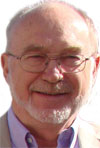
Many of the changes in the way the world works lead to new opportunities for different technologies. This has led to a new approach to electricity distribution using HVDC – High Voltage Direct Current – transmission lines, operating at up to 800 kV. Such power transfer lines are now installed particularly around Europe, and across China.
When power stations were smaller, and based near the major population centres, they tended to serve a local area with electric power, and this was best delivered using AC transmission, via local transformers, to produce the 110–240 VAC power distributed to each street. (As an aside, even more locally around the power station, district heating schemes could distribute some of the power using thermal transmission.) To provide the electrical energy transmission further afield, higher voltage AC transmission lines were used to feed a major substation, then distributing the power to local transformers, creating local networks – like the branches of a tree.
Currently, the new solar farms and wind power sources have been built well away from the major centres of population, where the land (or sea) space is available, and the conditions are right. Plus, hydroelectric plants are necessarily placed near the river or water flows, naturally located in the hills. All these sites are at the end of the thinnest branches of the old ‘distribution tree’, so new transmission lines are needed to take the power back to the population centres.
Long distance transmission
China also faced this problem, with economic development and a growing demand for power by the population in the west of the country, with the major new power stations and hydro plants located in the east. For transmission of power over distances like 500 km or more, the reactive power flow due to the large cable capacitance limits the maximum possible transmission distance, as the power loss becomes high. The installation and maintenance costs for the necessarily taller and wider dual pylon AC overhead transmission lines, also becomes excessive.
For such long distance transmission, HVDC comes into its own economically because the line losses are much lower, as are the line installation and maintenance costs, since HVDC (at around 600 kV) can use a single overhead pylon carrying just two conductors, or can use a buried cable. The higher costs of the HVDC terminal equipment, needed at both ends to convert the power back to AC for local distribution, are more than offset by the savings in the transmission line costs. Plus the environmental impact of the HVDC underground cables is insignificant, compared to overhead AC transmission. The possibility of using underground cables means HVDC links can deliver power into cities and urban areas where the use of pylons and overhead cables would not be tolerated.
So, over the last few years China has installed 24 projects using HVDC power transmission: one of these used a 1670 km line carrying 8000 MW of power to the east. The supplier for 19 of these projects, including the largest one, was ABB Power Systems. ABB also claims to be the major supplier of recent HVDC power transmission projects throughout Europe, and the rest of the world.
Undersea links
In Europe there are many power networks, based around different standards that were developed by the different countries: these AC networks can run at different frequencies, and are not often synchronised. It makes sense to wish to trade power between networks, to make use of surpluses when these are available, and cover for power outages or other unforeseen events. Transferring power using HVDC links makes sense, firstly because the receiving terminal can convert the DC to an AC power source running at the same frequency as the receiving network, plus the local engineers can phase synchronise the generated AC power with their other sources.
The second big advantage of HVDC links is that they can run in economically constructed underwater cables, to islands and across major sea routes, such as from the UK to France, or Norway and Sweden to Denmark, Germany and Finland. The NorNed link, from Norway to the Netherlands, is the world’s longest submarine power cable, at 580 km length. Similar HVDC links are used to supply power from hydro schemes and wind farms in the north of Scotland, across the estuary of the Moray Firth to the heavily populated Inverness/Aberdeen area.

The growth of offshore wind farms has led to this green energy being sent onshore using an HVDC submarine cable, and also vice versa, in the sense that offshore oil production platforms are now being supplied with power from onshore, delivered by cable, and just converted to AC power on the platform – saving weight and complexity offshore. Plans are being made to extend this European network, with possible hydro-electric power being delivered by cable from Iceland to Scotland, and from Norway via the Shetland Islands, then also to Scotland.
More importantly, in an African context perhaps, solar farms in North Africa will be able to transmit power to Europe via Spain from Morocco and to Italy from Tunisia and Libya.
Nick Denbow spent thirty years as a UK-based process instrumentation marketing manager, and then changed sides – becoming a freelance editor and starting Processingtalk.com. Avoiding retirement, he published the INSIDER automation newsletter for 5 years, and then acted as their European correspondent. He is now a freelance Automation and Control reporter and newsletter publisher, with a blog on www.nickdenbow.com
© Technews Publishing (Pty) Ltd | All Rights Reserved